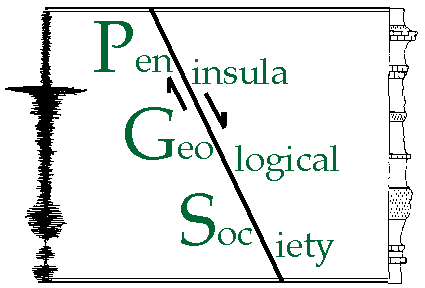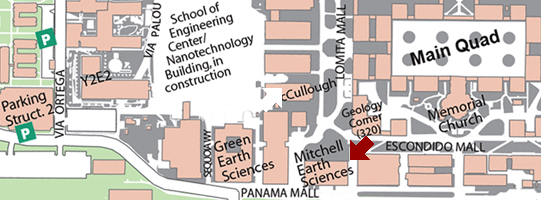
Presents
Location: Stanford University
This will be the 457th meeting since 1954

Hundreds of billions of tiny microearthquakes occur across the world each year, with the vast majority of these events going undetected even with sensitive recording instruments. The recent rise of anthropogenic seismicity has highlighted a need for an improved understanding of induced seismicity down to very small magnitude levels. Unfortunately, a substantial fraction of seismic events can be excluded from the official catalogs due to limitations in instrumentation and processing techniques. These can produce anomalously high detection thresholds that cause many microearthquakes to escape recognition entirely. Additionally, the amplitude of a microearthquake signal may be so small compared to the background ambient noise level that even a simple location procedure may be impossible for the event.
To improve the spatio-temporal resolution of microearthquake activity due to anthropogenic sources, we re-visit the seismicity in a conventional geothermal field and in an Engineered Geothermal System (EGS).Ê We investigate these two sites using the empirical Matched Field Processing (MFP) method to detect and locate more microearthquakes than can be detected using only conventional techniques. In the Salton Sea Geothermal Field we identify ~140% more events than were originally identified in the official catalog, and at the Newberry EGS site we identify ~70% more events.
This significant increase in data availability can improve the statistical analyses of induced seismicity sequences, reveal critical information about the ongoing evolution of the subsurface reservoirs, and better inform the construction of models for seismic hazard assessments.

Dennise Templeton
Dennise Tempelton is a Seismologist at Lawrence Livermore National Laboratory (LLNL). She did her undergraduate work at Rice (MA, Geology/Earth Science, General, 1995–1999), and her graduate work at University of California, Berkeley (MS, Geophysics and Seismology, 2000–2004; Ph.D., Geophysics and Seismology, 2004–2007). She spent a few months crunching well-log data for Marathon in 1999, a few months as a Research Intern at USGS in 2000 where she compiled published seismic velocity models as part of a project to develop a global subsurface velocity structure model, and nearly three years as a Postdoctoral Researcher at LLNL before they took her on as a Seismologist in 2010 where she investigated seismic activity at various geothermal, enhanced geothermal and shale gas sites. Her current research interests include modeling the deformation of geomaterials surrounding underground manmade structures. Determining non-double-couple earthquake source components from seismic waveform data.
Reservations: The preferred way to make reservations is simply to email Mike Diggles at mike@diggles.com by Dec. 6, tell him you will attend, commit to pay, and bring your payment to the meeting. Mike always emails a confirmation; if you don’t get one, assume email crashed yet again and email him a second time. A check made to “PGS” is preferred, payable at the meeting.
If you want to pay in advance:
Everyone (including Stanford folks now) Please make dinner reservations by Dec. 6. Contact Mike Diggles, at (650) 329-5404. Send check made out to “PGS” to Mike.
Dinner and the social hour is $35.00; this includes $1 that we use to help pay for students who are only $8.00 (also partially subsidized thanks to the School of Earth Sciences, Stanford University (Note, no-show reservations owe the full price).
Doris, whose wonderful crew prepares our meals, asked that we let you know that people who are late RSVPing and people who show up without a reservation will be welcome but that they may be eating on paper plates with plastic utensils (food supply permitting).
Dues for Academic Year 2015–2016 ($10.00) should be sent to Mike Diggles, 345 Middlefield Road, MS-910, Menlo Park, CA 94025. Mike’s phone: (650) 329-5404.
Officers: Kevin Gill, President; Sarah Nagorsen, Vice President; Mike Diggles, Secretary-Treasurer; Elizabeth Miller, PGS Stanford University Coordinator


PGS cartoon by Rick Blakely
Date created: November 25, 2015
Last modified: December 7, 2015
Created by: Mike Diggles, Webmaster-Secretary-Treasurer, PGS.